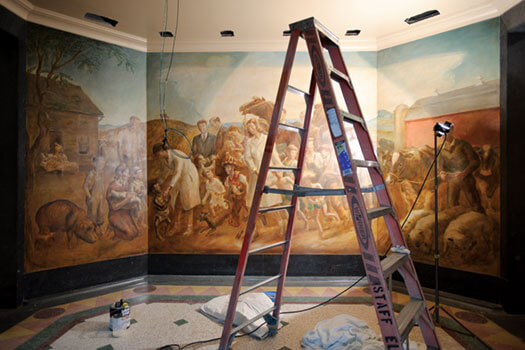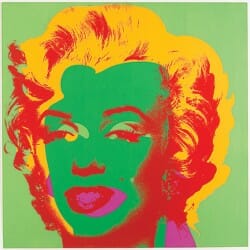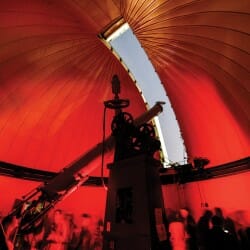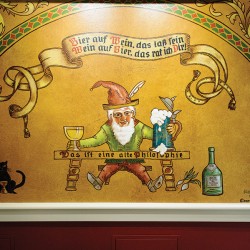Conserve and Protect

Conservators restored murals by John Steuart Curry that are part of the new Biochemistry Building on Henry Mall. Contractors worked around the paintings during renovations to prevent additional damage. Photo: Jeff Miller
Vintage Curry murals are given new life in a new space.
The renovated Biochemistry Building on Henry Mall is a blend of past and present, with the original 1912 exteriors enveloping a modern space. As the building was gutted and rebuilt, the university found a way to preserve an artistic treasure within: 1940s vintage murals by John Steuart Curry.
Contractors worked gently in adjacent spaces as they removed old walls and building materials, and a special heating-and-ventilation system was developed to shield and insulate the murals from the elements during the winter. During construction, all water pipes were routed around the murals, avoiding leaks that had damaged them in earlier decades.
The floor-to-ceiling paintings depicting the societal value of advances in science were given new life as conservators from the Midwest Art Conservation Center, a nonprofit, regional organization based in Minneapolis, meticulously stabilized, cleaned, and restored them, square inch by square inch.
“We cleaned a lot of dirt off of the surface,” says Joan Gorman, senior paintings conservator at the center. “We did that with dry-cleaning techniques and a very light aqueous cleaning, being careful not to use too much of our cleaning solutions.”
Curry was one member of an influential triad of American regionalist painters that included Grant Wood and Thomas Hart Benton. Born in Dunavant, Kansas, in 1897, Curry worked as an illustrator for Boys’ Life and the Saturday Evening Post. Eventually, he made his way to the UW as an artist-in-residence and painted the murals in the Biochemistry Building from 1941 to 1943.
Curry died in 1946, but left a rich legacy.
Published in the Spring 2012 issue



Comments
No comments posted yet.